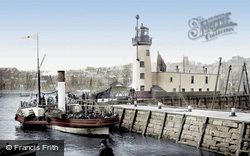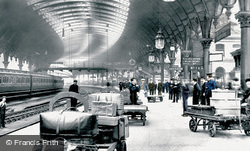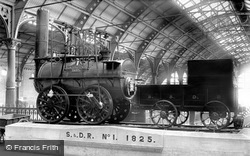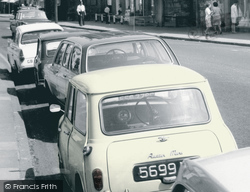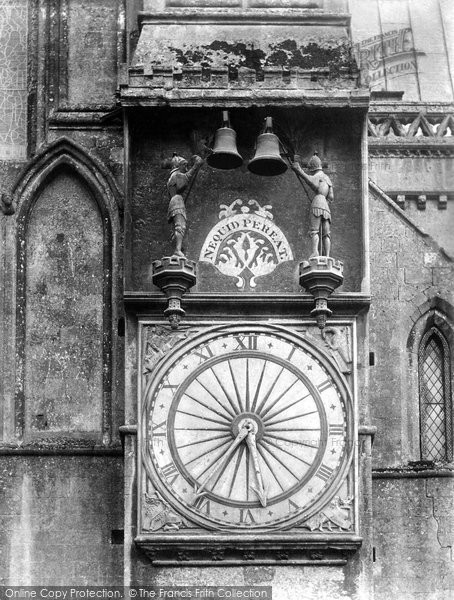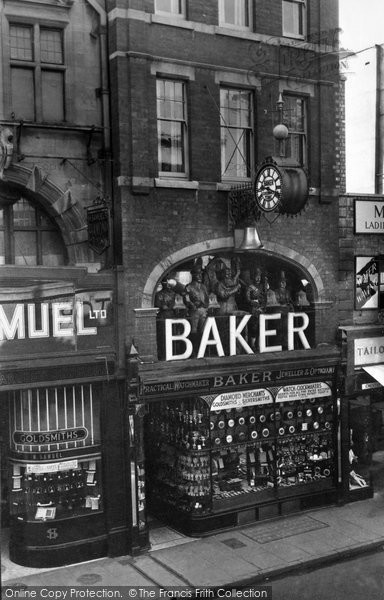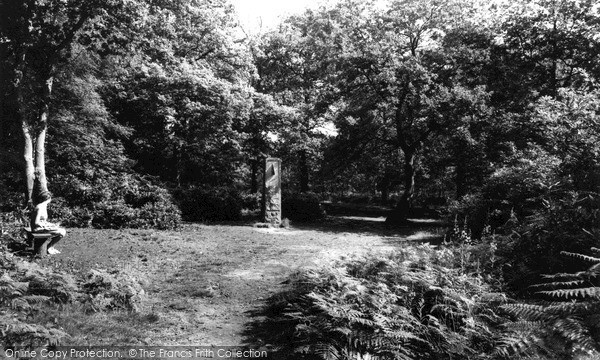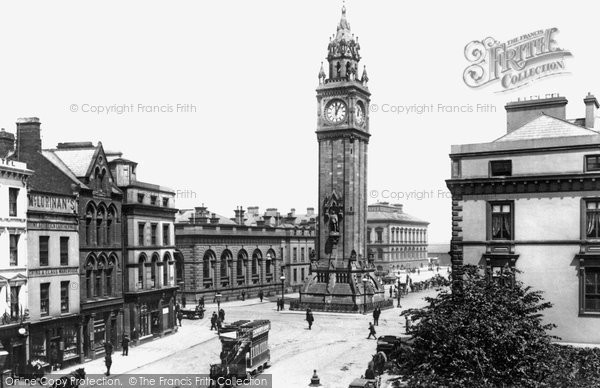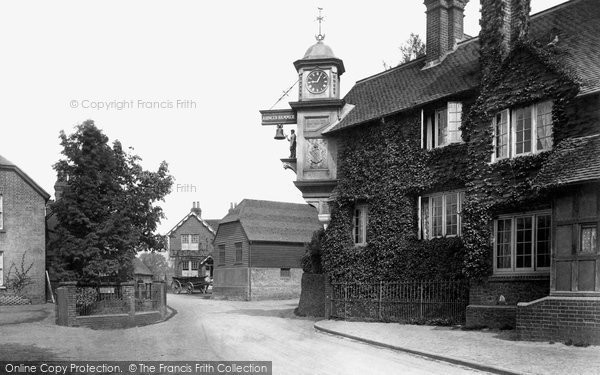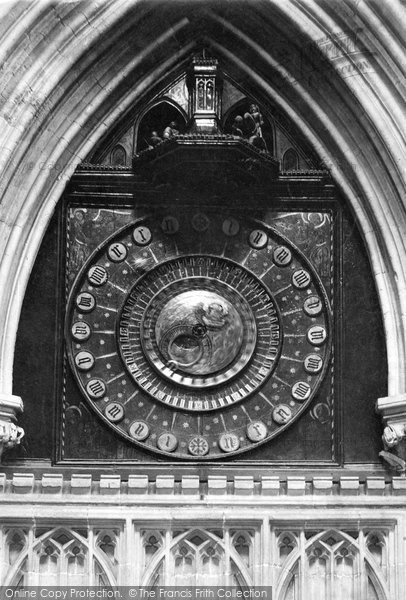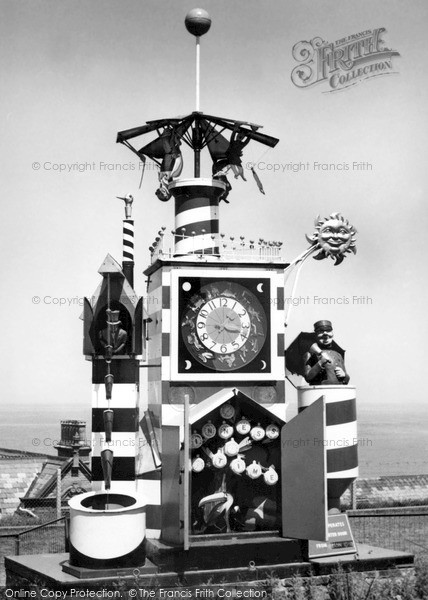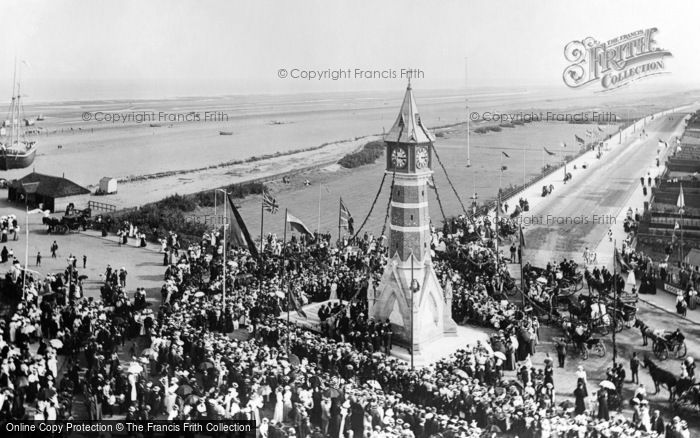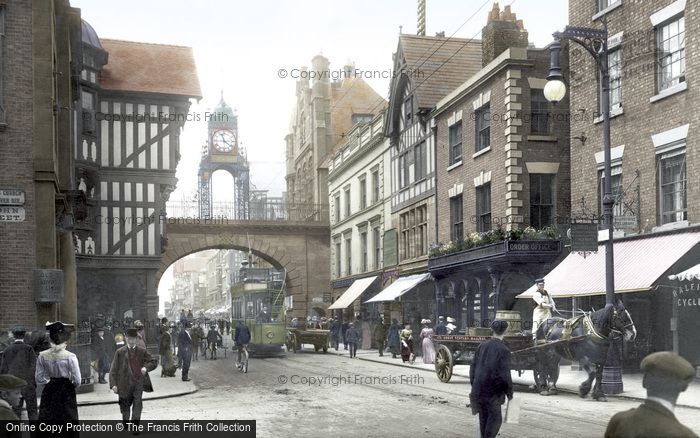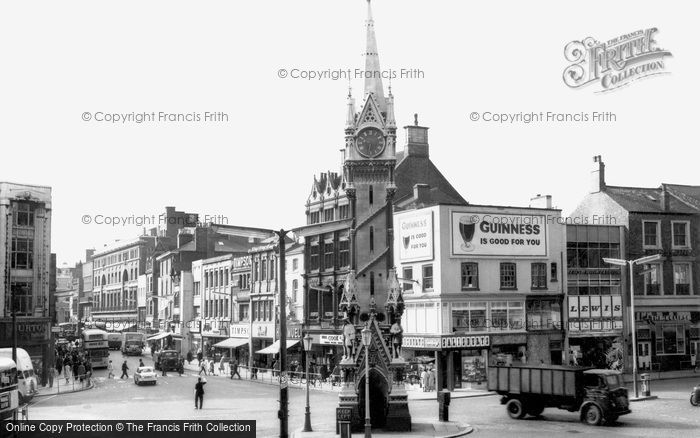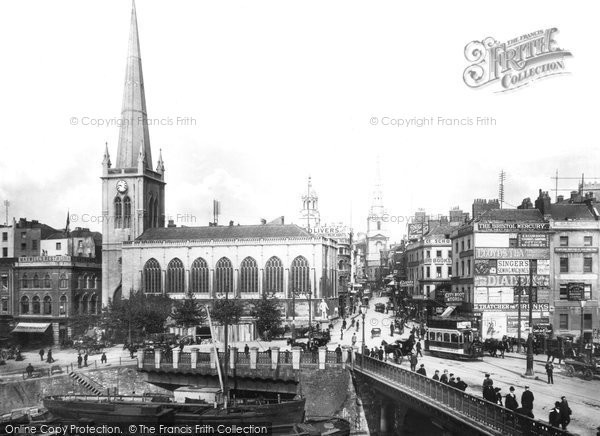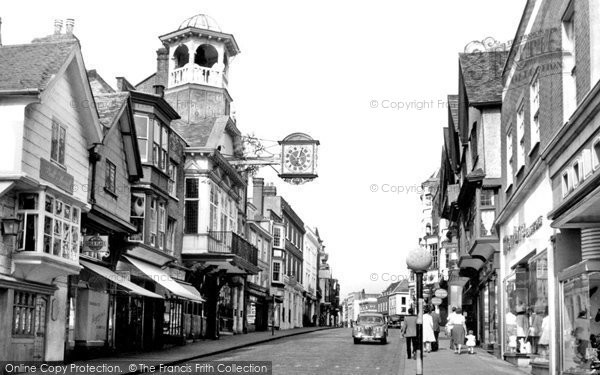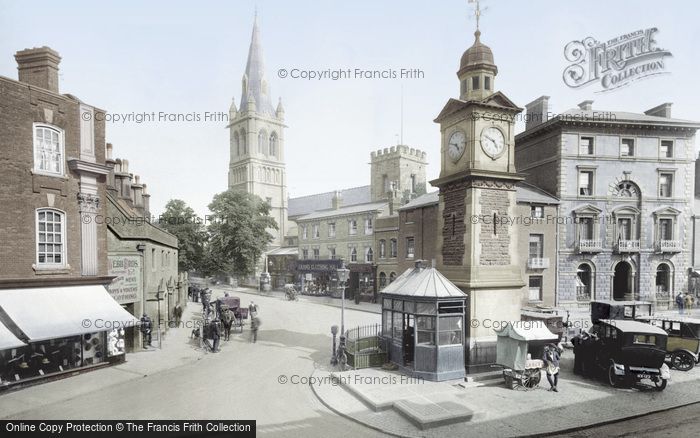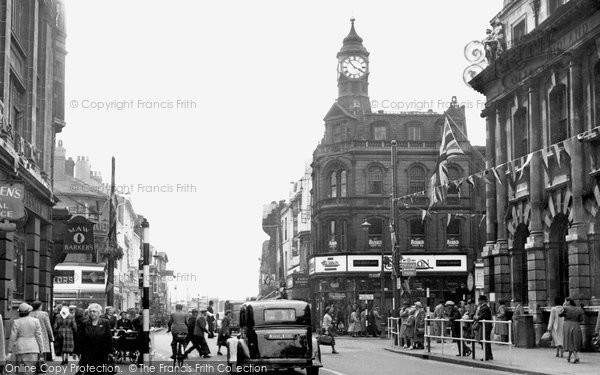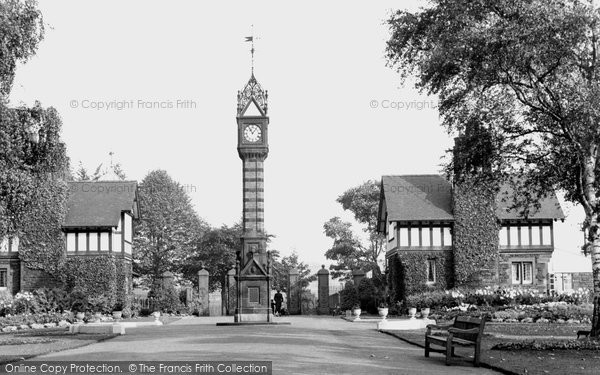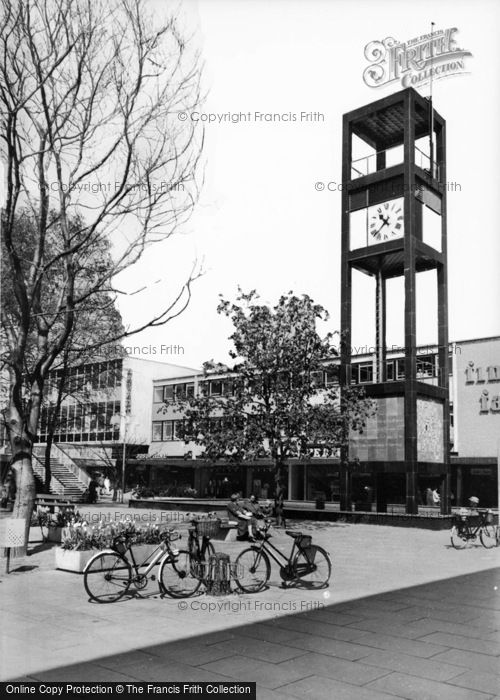It's about Time!
Published on
October 25th, 2021
Spring forward – fall back! British Summer Time ends on Saturday October 30th, when we put our clocks back one hour and embrace the change of season once again.
Clocks and clock towers are a common sight in the centre of so many of our towns, often part of truly stunning buildings. In this Blog Post we share some weird and wonderful clocks and clock towers we have found in the photographs of The Francis Frith Collection, with some fascinating history to help tell their stories.
Don't forget to put your clocks back one hour before you go to bed on Saturday folks!
This is the outside dial of the medieval clock at Wells Cathedral. The figures and face of the outside clock are a hundred years later than those inside; the bells are struck by the knights on the quarter hour. The inscription 'Nequid pereat' is a quotation from St John's Gospel, and means 'Let nothing perish (or be lost)', referring to the church fabric and the passage of time.
One of Gloucester's best-known features is the ingenious clock that stands at first floor level above G A Baker & Sons in Southgate Street. The shop was established on this site in 1882, but it was razed to the ground and rebuilt in 1904, which was when the clock appeared. On the front of the shop is a clock made by Niehus Brothers of Bristol. It has five striking jacks representing England (John Bull) sounding note ‘A’; Ireland (Irish girl) note ‘B’; Scotland (The Cock of the North) note ‘D’; Wales (Welsh girl) note ‘G’ and ‘Old Father Time’ himself to strike the hours on note ‘D’ an octave below the quarters. The clock has a Graham dead-beat escapement and is extremely accurate.
Here is a more recent photo, from 2004.
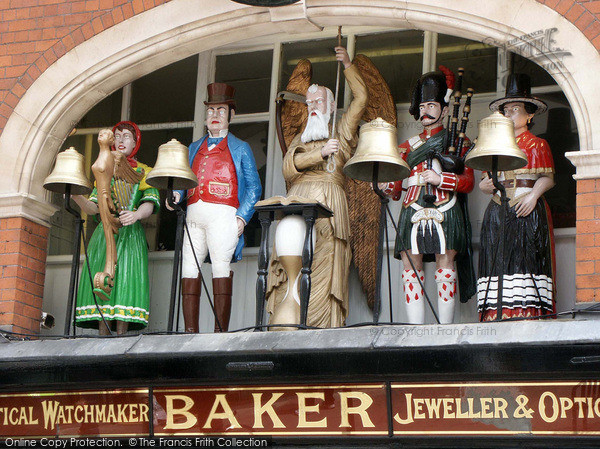
Willett Woods are situated north of the Petts Wood estate in south-east London. The area was acquired by public subscription for the National Trust in 1927. In the centre of the woods is the Willett memorial sundial dedicated to William Willett of Chislehurst, a builder who was inspired to campaign for daylight saving when riding through Pett Woods in the early 1900s. On the south face it reads ‘Horas non numero nisi aestivas’ (‘I will only tell you the sunny hours’.) On the north face it reads ‘This wood was purchased by public subscription to the memory of William Willett, the untiring advocate of ‘summer time’. Erected 1927.’
Queen Victoria was 42 when her beloved consort, Prince Albert, died. She grieved her loss for the rest of her long life, and the kingdom mourned with her. She symbolised a nation that was the great maritime empire-builder and the workshop of the world. For Belfast, the monument had to be fitting and the subscription generous. Work began in 1865, and it took four years to complete. The statue of the Prince is 40ft above the ground, and the near two-tonne bell could be heard eight miles away on quiet days. The clockwork is to the same design as that of Big Ben. The clock’s central position at the foot of High Street meant diverting the underground River Farset. The foundations did not quite meet the problem: although this photograph taken in 1897 does not show it, a tilt had already developed.
The village of Abinger Hammer near Dorking in Surrey is famous for its local landmark - the large clock that overhangs the A25, featuring a 4ft-high figure of Jack the Smith that strikes the bell every hour.
The astronomical clock, once thought to have been built by Peter Lightfoot, a monk at Glastonbury Abbey, was constructed in 1392 and has three dials. It is the second-oldest mechanical clock in Britain still working - the original works of the Wells clock still function in the Science Museum in London. Only Salisbury's clock is older, but it has no face. Knights joust above the dials; the same knight is struck back on his horse at every round. The clock shows two sets of twelve hours, the minutes, the sun's position, the moon's phases and the date of the lunar month. The visible parts of this clock are original, and were last repainted in 1727.
This wonderful Heath Robinson-like piece of horological fantasy made a tour of seaside resorts in the l950s. I took some of my blind friends to 'see' it, and they were allowed to touch it as well as to hear the extraordinary sounds it produced thanks to its striking mechanism.
One of the most famous and best-loved landmarks of the Lincolnshire seaside town of Skegness is the Jubilee Clock Tower, erected at the junction of Lumley Road with the seafront’s Grand Parade and South Parade. The Tower was built to commemorate Queen Victoria’s Diamond Jubilee. This view was taken on 11th August 1899, and shows its formal opening by the Countess of Scarbrough.
Chester was the headquarters of the Twentieth Legion in Roman times. The Romans built a huge fort there called Deva, which was occupied for over 300 years. The Eastgate in Chester was the entry point of the Roman road, the Via Devana, into Deva; it was rebuilt as an elegant arch in 1769. The clock on top of Eastgate was presented to the city by Edward Evans-Lloyd in 1897 to commemorate Queen Victoria’s Diamond Jubilee.
This photograph shows Leicester’s Gothic Clock Tower, which was designed by local architect Joseph Goddard in 1868. It is decorated with pinnacles and canopies, along with representations of four Leicester worthies: Alderman Gabriel Newton, Simon de Montfort, William Wygston and Sir Thomas White, one-time Mayor of Leicester and landlord of the nearby Horse and Trumpet.
This photograph was taken looking across Bristol Bridge towards High Street. Dominating the view is the church of St Nicholas. The unique clock on the east wall of its tower is the only church clock in Britain to have a second hand.
A famous landmark of Guildford’s High Street is the Aylward clock of 1683, jutting out from the Elizabethan Guildhall. The story goes that in the late 17th century a clockmaker by the name of John Aylward came to Guildford and tried to establish a shop in the town, but the Guild Merchant refused him permission. Accordingly, he set up shop on the Mount – just outside the town limits – and made the handsome clock for the Guildhall that is now the dominant feature on the High Street. In gratitude the Guild Merchant made him a member, and he was eventually able to open a shop in the town.
Rugby celebrated Queen Victoria’s Golden Jubilee in 1887 with the erection of the Jubilee Clock Tower in Market Place. The wooden building at the base of the clock tower in this photograph was a cabmen’s shelter.
The junction of Baxtergate, Frenchgate, St Sepulchre Gate and High Street in Doncaster is known as Clock Corner because of the huge clock on the tower that tops the building there. There has been a clock on the site since 1731 but the present Clock Corner building was erected in 1894. The clock plays a Westminster chime on the hour and every quarter from 8am to 10pm. In addition, for the ten days running up until Christmas it plays the Christmas carol ‘Silent Night,’ and on New Year’s Eve it plays ‘Auld Lang Syne’.
Crewe was just a small hamlet until a number of railways came there in the 19th century, making it a major railway intersection. The town’s growth was also due to the locomotive production works founded there by the Grand Junction Railway Company in 1843. By the end of the 19th century there were over 40,000 people living in Crewe, nearly a quarter of whom were linked in some way with the railway industry. In 1887, the year of Queen Victoria’s golden jubilee, the London North Western Railway Company presented Queen’s Park to the town, a gift that also commemorated 50 years of the railway in Crewe. This photograph shows the clock tower near the main entrance to Queen’s Park. It was built using subscriptions from workers in all departments of the LNWRC ‘as a token of their appreciation of the generosity of their Board of Directors (who) presented the park to the town’. It is decorated with a carved head on each side, depicting three board members and Queen Victoria.
In 1946 Stevenage was designated as the site of the first of the New Towns that were developed to ease the housing crisis after the Second World War, and was expanded to embrace an additional 60,000 people. This view shows the Town Square in the centre of the New Town shortly after completion in 1958 – its pedestrianised layout was considered revolutionary at the time. The Clock Tower that forms its centrepiece has become a symbol of the New Town and is now a listed monument.
This post has the following tags:
Archives,Nostalgia.
You may find more posts of interest within those tags.
Join the thousands who receive our regular doses of warming nostalgia!
Have our latest blog posts and archive news delivered directly to your
inbox.
Absolutely free. Unsubscribe anytime.




